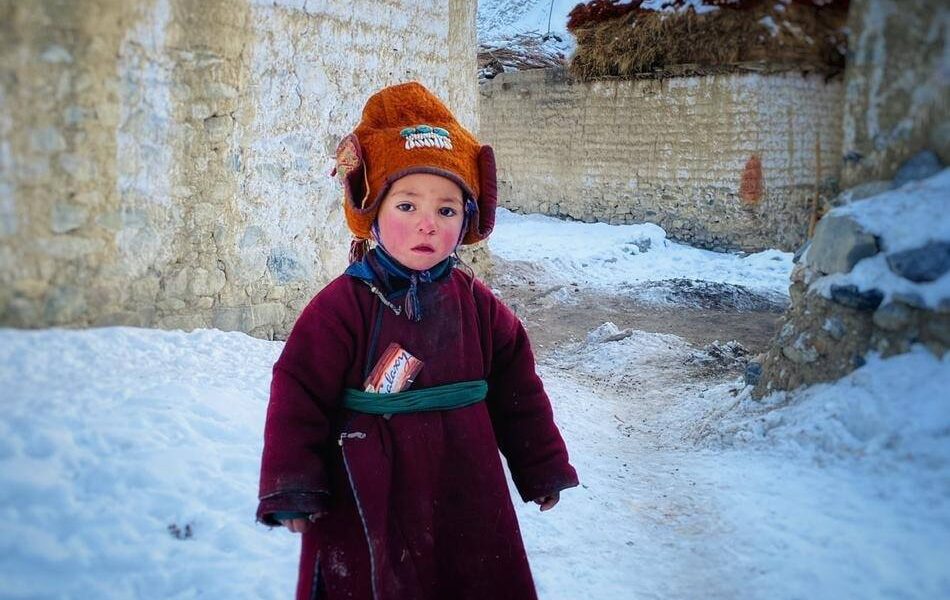Surviving Ladakh’s Harsh Winters, Ladakh, with its stark, snow-covered landscapes, is one of the most beautiful places on Earth. Despite its beauty, the region’s harsh winters pose significant challenges, but the locals have mastered the art of endurance with traditional wisdom and practical techniques. But as winter sets in, this remote region turns into one of the harshest places to survive. Sub-zero temperatures, dry air, and extreme isolation make everyday life challenging. Despite these obstacles, Ladakh’s locals have developed unique survival techniques, blending traditional wisdom with modern solutions to endure the coldest months. In this article, we’ll explore how Ladakhis survive their brutal winters and what we can learn from them.
1. Introduction to Ladakh’s Harsh Winters
Why Ladakh’s Winters Are Considered One of the Harshest in the World
Ladakh, nestled in the Indian Himalayas, experiences some of the harshest winters in the world. With altitudes reaching over 3,000 meters (9,800 feet), winters can last from late October to March, with temperatures often plunging to -30°C (-22°F). The region also suffers from dry air and strong winds, making the cold even more unbearable. For the locals, winter survival isn’t just about wearing heavy clothing; it’s about a way of life built around adapting to the extreme cold.
Ladakh’s Winter Climate: Sub-Zero Temperatures and Dry Air
The winter climate in Ladakh is characterized by long periods of freezing temperatures. The region receives minimal snowfall, but the wind chill factor is significant due to the thin air at high altitudes. The dryness of the air dehydrates both the body and the environment, making hydration and skin care essential. Locals rely heavily on traditional methods to stay warm and hydrated in these sub-zero conditions.

2. How Ladakhis Prepare for the Winter Months
Traditional Ladakhi Preparations for Winter
Preparation for Ladakh’s harsh winter begins months in advance. Before the first snow falls, locals stock up on food, firewood, and essential supplies. Given the remoteness of the region, winter travel is almost impossible once the roads are closed by snow, so preparation is crucial for survival. Families ensure they have enough supplies to last them through the coldest months, while livestock is brought closer to home for easier care.
Gathering and Storing Essential Supplies Before Winter Hits
Ladakhis store large quantities of dried food, such as grains, legumes, and root vegetables, to sustain them through the winter. Firewood is collected in large quantities, as traditional wood stoves remain the primary source of heating. These stoves, known as bukhari, are efficient at keeping homes warm during the long, freezing nights. Locals also insulate their homes with straw, mud, and other natural materials to keep the cold air out.
3. The Role of Traditional Ladakhi Homes in Winter Survival
How Traditional Ladakhi Houses Help Locals Survive Extreme Cold
Ladakhi homes are built to withstand the extreme cold using traditional architectural techniques that have been passed down through generations. These homes are typically made from mud bricks, which act as natural insulators. The thick walls prevent heat from escaping, while small windows reduce drafts. Some homes are partially built underground, further helping to conserve warmth.
Insulation and Heating Techniques Used in Ladakhi Homes
The insulation techniques used in Ladakhi homes are remarkably simple but effective. Mud and straw provide excellent thermal mass, keeping the interiors warm even when temperatures drop outside. Rooms are often centered around a single wood stove, which is fueled by yak dung or firewood. This central stove serves as the primary heating source, and families gather around it for warmth. Curtains and rugs are also used to block cold air from entering through doorways and windows.
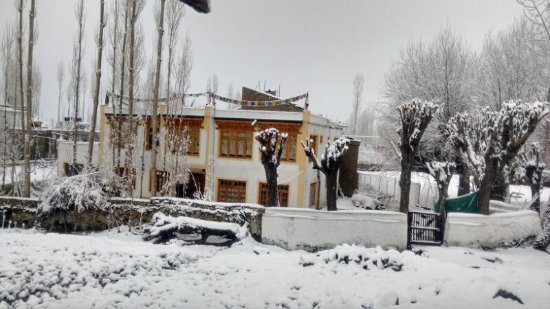
4. Clothing and Gear: How Locals Stay Warm in Sub-Zero Temperatures
Traditional Ladakhi Winter Clothing and Accessories
In the winter months, Ladakhis rely on traditional clothing made from yak wool, which is known for its insulation properties. Heavy woolen coats, called gonchas, are commonly worn. These coats are layered with pashmina shawls and other woolen accessories to keep the body warm. Unlike synthetic materials, yak wool and pashmina naturally trap body heat while allowing moisture to escape, keeping the wearer warm and dry.
Modern vs. Traditional Clothing: A Comparative Look
While traditional clothing is still widely used, some locals now opt for modern thermal gear, particularly younger generations who are more mobile. However, many find that traditional Ladakhi attire, with its layers and natural materials, is better suited for the region’s unique climate. For visitors, combining modern clothing such as thermal jackets with traditional woolen accessories is often the best way to stay warm.
5. The Importance of Diet in Surviving Ladakh’s Winters
Traditional Ladakhi Winter Foods and Their Role in Survival
Diet plays a crucial role in helping Ladakhis survive the cold winter months. Foods rich in fat and protein are consumed in large quantities to generate body heat and provide energy. Butter tea, made from yak butter, salt, and tea leaves, is a staple during winter, providing warmth and calories. Similarly, thukpa, a noodle soup, is a favorite winter dish that combines warmth and nutrition.
| Traditional Ladakhi Winter Foods | Benefits |
|---|---|
| Butter Tea (Yak Butter, Salt, Tea) | Provides warmth and energy |
| Thukpa (Noodle Soup) | Fills and warms the body |
| Skieu (Pasta Dish with Vegetables) | Provides carbohydrates |
Hydration and Nutrition During Ladakh’s Dry Winters
Despite the cold, staying hydrated is essential in Ladakh’s dry winter climate. Locals consume plenty of herbal teas and soups to maintain hydration levels. The high-protein diet also helps them generate the energy needed to stay warm. Without adequate nutrition and hydration, surviving the winter months would be far more difficult.
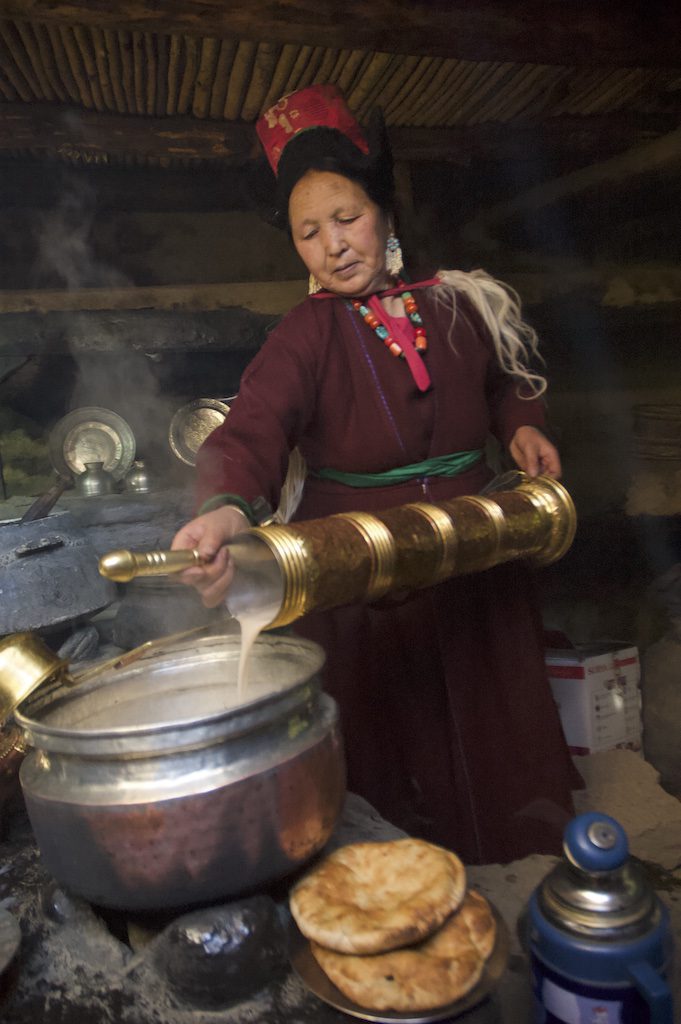
6. Social and Cultural Practices to Cope With Winter
Community Support and Cultural Resilience During the Coldest Months
Ladakhis have developed strong community bonds to survive the long, isolating winter months. Neighbors help each other prepare for winter by sharing food and firewood, and communal gatherings are common throughout the season. Religious festivals and rituals provide psychological comfort and help maintain a sense of normalcy despite the extreme conditions.
The Role of Festivals in Boosting Morale During Harsh Winters
Winter festivals like Losar (the Ladakhi New Year) are celebrated with great enthusiasm. These festivals offer a much-needed break from the monotony and isolation of winter, allowing locals to come together and celebrate their resilience. Traditional dances, prayers, and feasts are integral parts of these events, and they boost the morale of the entire community.
7. How Locals Adapt to Harsh Winter Conditions
Physical and Psychological Adaptation to Ladakh’s Harsh Winters
Ladakhis have learned to adapt both physically and mentally to their extreme environment. Over generations, their bodies have acclimatized to the high altitude and low oxygen levels, which allows them to function in conditions that would incapacitate many outsiders. Additionally, their strong community ties and cultural practices help them remain psychologically resilient through the dark, cold months.
Managing Health and Well-Being in Extreme Winter Weather
Health management is critical during Ladakh’s winters. Locals rely on natural remedies to treat common cold-related illnesses and altitude sickness. Herbal teas, ginger, and garlic are frequently used to boost the immune system and fight off infections. Regular physical activity, such as shoveling snow or caring for livestock, keeps their bodies strong and active despite the extreme cold.
8. Modern Challenges and Solutions for Surviving Ladakh Winters
Modern Infrastructure and Its Impact on Winter Survival in Ladakh
With the advent of modern infrastructure, life in Ladakh has changed, but the challenges of winter remain. Solar-powered heaters and better insulation have been introduced in some homes, providing additional comfort. However, many villages still rely on traditional methods due to the lack of access to modern resources.
Sustainable Solutions for Winter Survival in Ladakh
Sustainability is becoming increasingly important in Ladakh. The region is adopting more environmentally friendly solutions, such as solar cookers and passive solar homes. These innovations reduce the need for firewood, preserving the delicate ecosystem while keeping homes warm during winter.
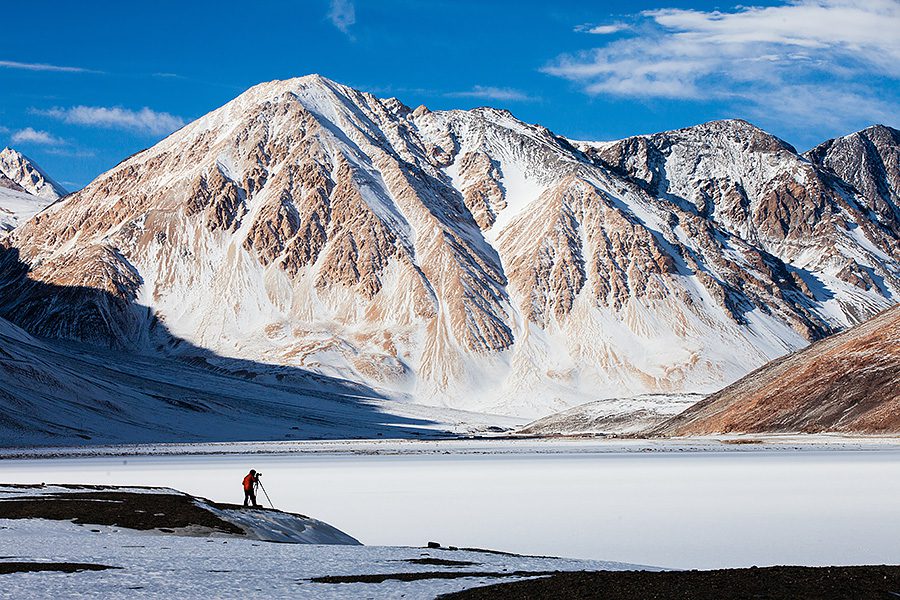
9. Winter Tourism in Ladakh: What Visitors Can Learn From Locals
Preparing for a Winter Trip to Ladakh: What You Need to Know
For tourists, visiting Ladakh in winter can be both thrilling and challenging. Preparation is key to surviving the region’s extreme conditions. Visitors should pack thermal clothing, hand warmers, and plenty of high-energy snacks to keep them warm and energized during their trip. Altitude sickness can also be a concern, so acclimatization is crucial.
Learning From Locals: Winter Survival Tips for Visitors
Locals offer invaluable advice to tourists on how to endure Ladakh’s harsh winters. The most important tip is to stay hydrated, dress in layers, and stay indoors as much as possible during extreme cold spells. Embracing the local diet of butter tea and thukpa will also help visitors stay warm and nourished.
10. Conclusion: How Ladakhis Thrive in Harsh Winter Conditions
Surviving Ladakh’s harsh winters is a testament to the strength and resilience of its people. Through a combination of traditional practices, strong community bonds, and modern innovations, Ladakhis have learned not only to survive but to thrive in one of the coldest inhabited regions on Earth. Their way of life offers valuable lessons in adaptability, sustainability, and the importance of community in the face of extreme adversity.
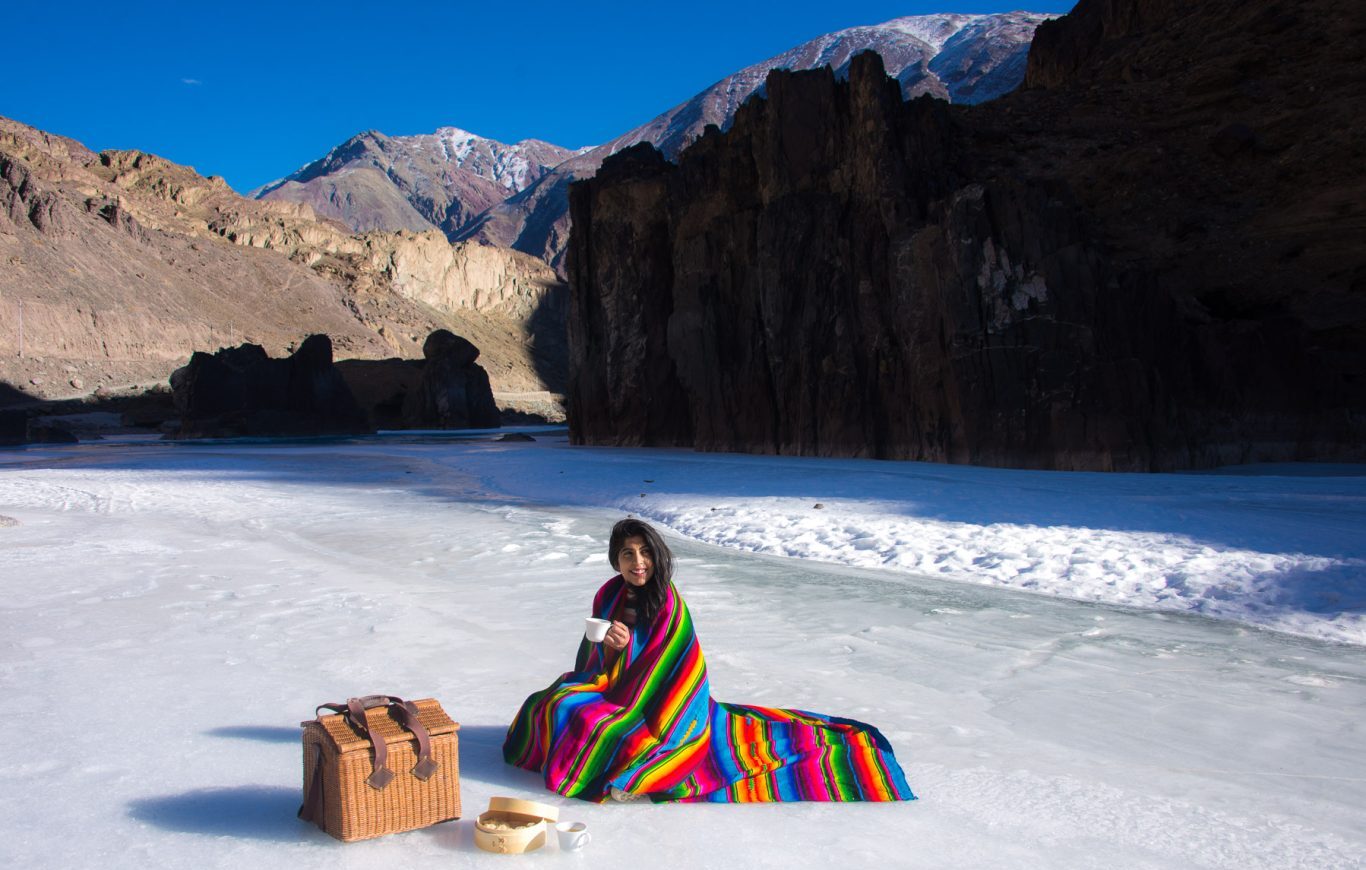
Q&A Section
1. How cold does it get in Ladakh during winter?
In Ladakh, winter temperatures can drop as low as -30°C (-22°F), especially in January and February, the coldest months.
2. What do Ladakhis eat during winter?
Ladakhis consume high-fat and high-protein foods like butter tea, thukpa (noodle soup), and dried meats to maintain body heat during winter.
3. How do Ladakhi homes stay warm?
Traditional Ladakhi homes are made from mud bricks and use wood or yak-dung stoves. Thick walls and small windows help insulate the houses from extreme cold.
4. What should visitors pack for a winter trip to Ladakh?
Visitors should pack thermal layers, hand warmers, thick socks, woolen hats, and plenty of energy-dense snacks. Staying warm and hydrated is crucial.
5. Can you visit Ladakh during the winter?
Yes, but it requires thorough preparation. Many roads are closed, so air travel is the only option. Tourists can experience Ladakh’s beautiful yet challenging winter landscape.
6. How do Ladakhis maintain their mental health during the long winter months?
Strong community ties, religious practices, and winter festivals help Ladakhis maintain their psychological resilience during the long, isolating winters.

